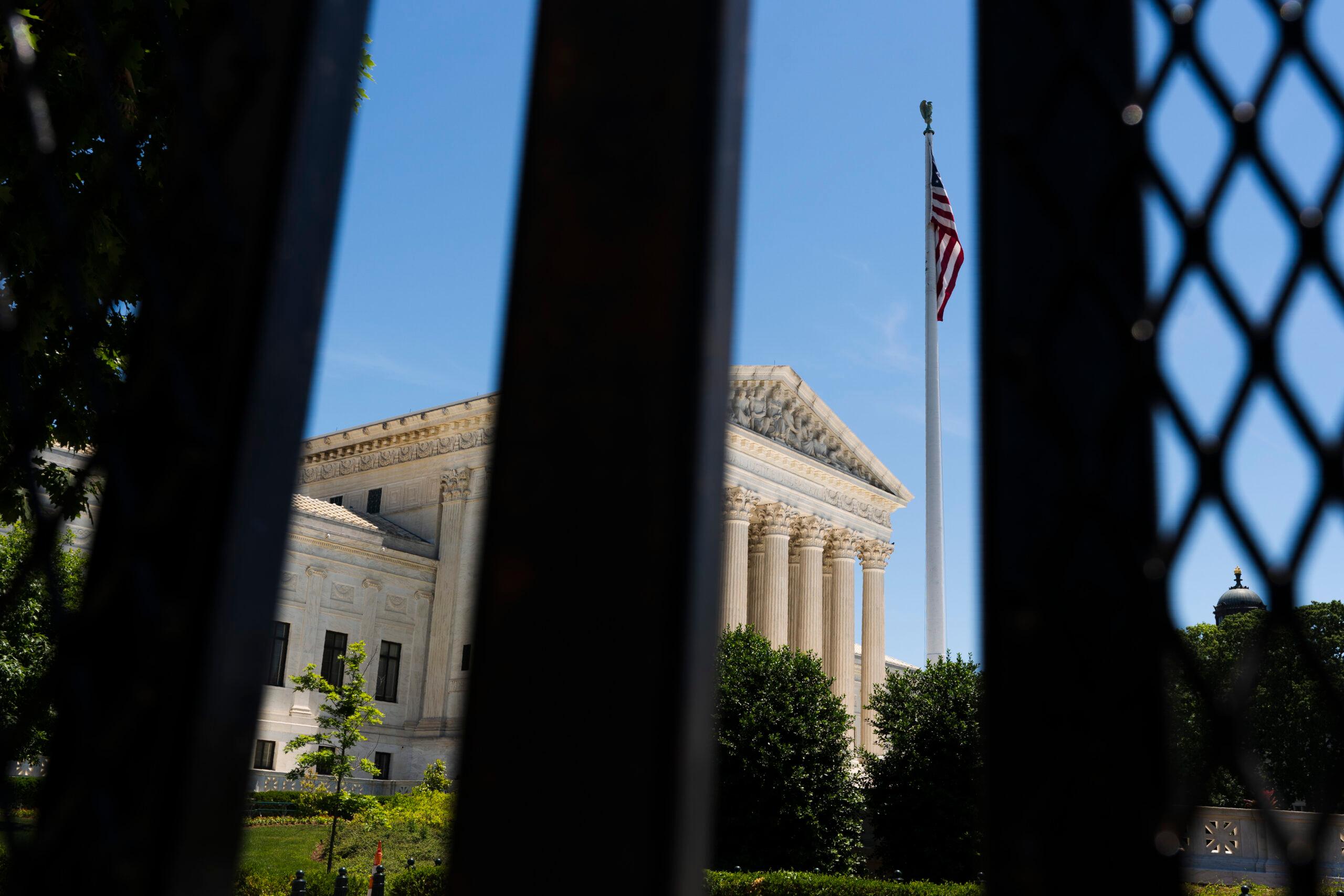
The nation’s highest court on Wednesday seemed poised to raise the standard on when a person could be convicted of stalking, further defining what is “threatening speech,” based on a 2016 Colorado conviction of a man who harassed a Littleton singer songwriter.
Before the U.S. Supreme Court, Colorado Attorney General Phil Weiser argued the state was right to convict and imprison Billy Raymond Counterman after he sent musical performer Coles Whalen hundreds of thousands of messages via Facebook over several years. Some of the messages were harmless, others said she should die.
Weiser argued that in the context of volume, frequency, and some of the messages, along with how Whalen perceived those messages, the state was right to send him to prison because threatening messages are usually the start of something much worse.
“Requiring specific intent in cases of threatening stalkers would immunize stalkers who are untethered from reality,” Weiser told the justices. “It would also allow devious stalkers to escape accountability by insisting that they meant nothing by their harmful statements. This matters because threats made by stalkers terrorize victims, and for good reason, 90 percent of actual or attempted domestic violence murder cases begin with stalking.”
But, arguing on behalf of Counterman, John Elwood said he worried that imprisoning people for messages they didn’t intend to be threatening could have a dangerous chilling effect on America’s free speech protections.
He has said that Counterman, who is mentally ill, did not intend to be threatening to Whalen, nor did he understand his notes to be scary.
“The chilling effect comes from being told it doesn’t matter what you think, you just have to think about the reaction of your audience,” Elwood said.
Colorado has a lower standard on what kind of speech is considered threatening
Colorado’s conviction of Counterman — and the state’s current “objective” standard in statute — doesn’t necessarily require that the defendant explain his side of the story. In other words, even if he didn’t intend for the messages to be threatening, it didn’t matter in his conviction.
The majority of the justices seemed sympathetic to that argument and the broader implications that more “sensitive” audiences could interpret something as threatening, even if the messenger didn’t intend for it to be that way.
“If you don’t have some sort of subjective intent in a case, you are baking in the objective reasonable viewer of society and bias to whatever that jury may think the community standard is,” said Justice Sonia Sotomayor. “And what’s OK for a video game person or player and a rapper is a very different thing.”
Justice Neil Gorsuch agreed.
“We live in a world in which people are sensitive and, and may be increasingly sensitive,” he said. “What do we do in a world in which reasonable people may deem things harmful, hurtful, threatening and we're going to hold people liable willy-nilly for that.”
Counterman, who lived in Denver at the time of his conviction, served a little more than two years in prison and a year on parole for sending hundreds of thousands of unwanted messages to Whalen.
Whalen, now 43, chose to leave the state after Counterman went to prison because she was so emotionally upset about her ordeal, which went on for several years before she got the police involved. She told CPR News that it was among the most harrowing experiences of her life, and she still isn’t over it.
“They put him in handcuffs, he left the room and I went back out on the street to try to continue with my life,” she said. “And I ended up realizing that trauma doesn’t just heal because somebody goes to jail. The damage had been done. But the time that he spent in jail did give me a number of years with some guaranteed separation, some time to rebuild my life and to try and figure out how to move on.”
The U.S. Supreme Court has taken this issue up before.
They took up a case in 2014 about a Pennsylvania man who was sent to prison for posting rants on Facebook threatening his co-workers and ex-wife.
But they declined to answer the larger question on what the line actually is on “threatening” speech, which could be a reason they plucked the Counterman case from the Colorado Court of Appeals, which sided with Colorado’s decision to imprison Counterman. The Colorado Supreme Court declined to hear the case.
When justices deliver an opinion later this spring or early summer, they could do a number of things: They could let the lower court opinion stand, which would allow a patchwork of standards across state lines on the definition of threatening speech. Elwood said that more than 20 states require defendants to actually have malicious intent for conviction, and Colorado isn’t one of them.
Justices could raise the standard to a so-called “reckless” level, which is higher than almost all states have now. It means that the messenger engaged in behavior so reckless that it is considered an extreme departure from the care a reasonable person would exercise in similar circumstances. The standard usually does require that the messenger had some knowledge that what they were doing was harmful, they just decided to disregard it.
Or they could rule that the speaker or messenger’s intent matters and that in cases like Counterman’s, if he took the stand under oath and said he didn’t intend to be threatening, that would have to be taken under consideration by a jury.
Not all speech is protected, of course. Some forms of obscenity aren’t protected. A person can’t yell “fire” in a crowded theater. People have been imprisoned for threatening the president, threatening to blow up schools — even if they were intended to be a hoax.
But the difference that Counterman’s attorney argues is that those are cases where someone intended to do harm, even if it was a joke.
Upholding the Colorado law could put a chill on free speech
Elwood said much of his concerns around this case center on the broader implications of chilling critical and subjectively threatening speech. The American Civil Liberties Union, the Alliance Defending Freedom, the Cato Institute and many others wrote amicus briefs on behalf of Counterman saying they worry that the threshold for what the government decides is scary speech could be subjective.
He said many of these kinds of cases go unreported and unexamined by the media and the courts.
“Unless it just happens to catch the fancy of local media, it is just not covered,” he told the justices. “And so some of the best examples are ones that are simply emailed to me by spouses or relatives of the people who are prosecuted.”
He noted one 58-year-old Illinois man who, on the comments page of a local newspaper, responded to an article about littering that there should be more “well-placed pressure cooker pots.”
“He was arrested and held for six weeks on a bond he could not afford until he pleaded guilty to disorderly conduct,” Elwood said. “That’s a good example of what we are talking about.”
But Justice Elena Kagan seemed sympathetic to Colorado’s argument that drawing the line at what is perceived to be “threatening” speech is not going to have any negative effects on America’s critical discourse.
“We’ve insisted that states have breathing room. There’s a very thin line between the no value speech and the speech that is of great value,” she said. “But what is the area of speech that we think is really going to be chilled by drawing the line in the place where this state, and many other states, want to draw it?”
Weiser argues context matters
Ahead of the oral arguments, Whalen, who did not attend them in Washington, D.C., said she worried that the high court was going to parse the messages individually and question why she was so fearful.
“Lawyers and justices can pull apart the single messages that he sent me,” she said. “Was this one threatening? Was that one threatening? But the bigger picture, the lived experience is much more than that.”
Indeed, that happened in a lively exchange between Chief Justice John Roberts and Weiser.
“Here's one of the statements for which he was convicted. ‘Staying in cyber life is gonna kill you. Come out for coffee. You have my number,’ ” Roberts said to Weiser. “ In what way is that threatening?”
Weiser responded, “When it's put into the context. Mr. Chief Justice, what is being said here is, if you don't come out for coffee with me, bad things are gonna happen to you.”
Roberts responded, “I'm sorry, this isn't remotely like that. It says, ‘Staying in cyber life is going to kill you.’ I, I can't promise I haven't said that,” he said, sparking the courtroom to erupt in laughter.
Weiser said that the seriousness of earlier threats can be a slippery slope for stalking victims.
“Victims of stalking routinely face scores and scores, hundreds of unwanted invasive engagements from somebody,” he said. “And the consequence in stalking cases is if you don't give me what I want, I can turn violent.”
He noted that the context of Whalen’s lived experience should matter.
“When you put them all together, when you take one of these out of context or put it into a different context, it means something different,” Weiser said.
The U.S. Department of Justice argued on Colorado’s side on the case urging that the justices leave it up to state legislatures to determine the lines of threatening speech — and if the judges decided that standard it removes power from states
On the steps of the courthouse after the arguments were over, Weiser said he made his case.
“We got our point across, which is: The victim in this case reasonably perceived a threat to her safety,” he said. “The court now has to understand that … We are confident in our argument and we look forward to the decision.”
Asked whether he thought the state was going to lose the case, Weiser said he’s observed the court enough times to know not to read tea leaves too much.
“You can’t always tell from oral argument which way the court is going to go,” he said.
Elwood said he was “cautiously optimistic” about the court siding with Counterman.
“I’m glad Mr. Counterman got his day here,” he said.









